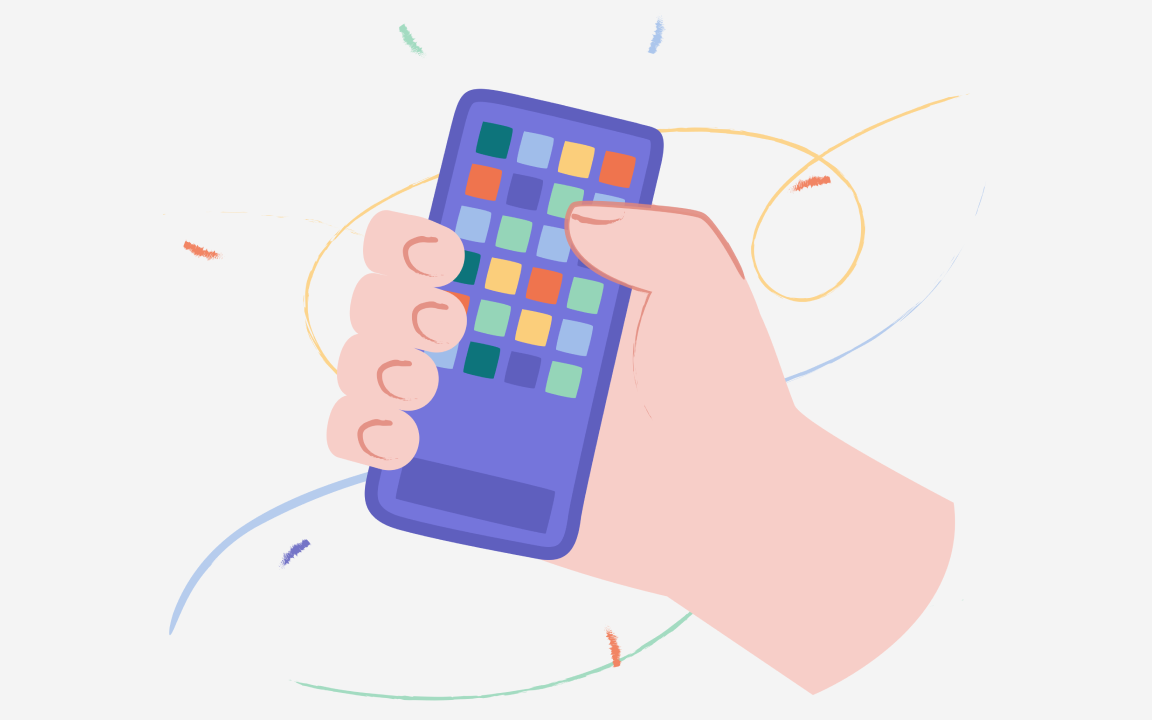By allowing employees to access the courses on their devices, mobile learning enables them to learn quickly. Learners get improved understanding and greater productivity through repetition and cautious pace.
In a nutshell, Mobile learning is imperative for a smooth learning experience. Mobile learning encompasses more than just desktop-based online learning on a smaller screen. Any gadget a person can carry should be compatible with a mobile learning curriculum. Mobiles, tablets, laptops, and other devices are included. Regardless of the technology the learners use, it should be a visually stimulating and engaging experience.
But have you ever wondered about the best ways to deliver your mobile learning so that it is exciting and compelling? Here are the 7 best ways to deliver mobile learning.
Delivery Through Online Videos
Online videos are one of the best mediums for delivering learning on mobile devices. Mobile learning benefits significantly from the use of online videos. This is so because the brain responds to them favorably. They can assist in quickly providing learners with important information. You may give training that aids learner retention by leveraging online videos for your mobile learning. Online videos are also crucial for simplifying complex subjects to match the demands of your learners.
Additionally, you can design your course material using various free web tools rather than spending money on developing pricey videos. You can edit the video content using free editing tools and internal talent for voiceovers. When done well, videos typically ensure audience participation and are useful for long-term learning.
Mobile Learning Through Microlearning
One of the major developments in education and learning is micro-learning, which is used in both business and academic settings worldwide. In the highly linked and quick-paced world we live in, people have become accustomed to easily digestible information. For some time now, blogs, social networks, brand-new websites, and video platforms have all been innovating in this area. They have access to the data necessary to determine how long modern people's attention spans are and cater their content accordingly. The truth is that there is no cause for cynicism over our declining attention spans; rather, it just indicates that information needs to be simplified for simpler assimilation.
This is why you should consider creating shorter videos and text modules that can be finished in a few minutes. This microlearning strategy to deliver mobile learning programs will make it more effective with your learners. You'll observe that your learners respond and retain the information better if you let them move through the subject at their own pace rather than forcing them to sit still for long periods.
Dedicated Games To Deliver Mobile Learning
Game-based material is yet another fantastic approach to providing learning on mobile devices. Game-based content can be created for touch-enabled mobile devices to increase learner engagement. With the help of educational games with scores and progress levels, you can deliver your mobile learning effectively. The games should be such that it stays the same, and you can always pick up where you left off. Additionally, they use notification tools to periodically remind you of the lessons and the most recent developments.
Deliver Mobile Learning Through Images
Images are an important component of mobile learning delivery. Your mobile learning course's picture selection shouldn't be an afterthought. It is not a task you should approach carelessly and complete quickly. A strong instructional tool that increases learner engagement, lowers cognitive load, and most effectively satisfies learning objectives is a pertinent, memorable image. The pictures you use in a lesson matter as much as the text you create, the activities you plan, and the tests you include. Make careful image selections that support the text, establish focal points, and encourage a genuine interest in the studied topic. A captivating visual layout aids in maintaining students' concentration and attention.
Make sure to specifically design pictures for mobile devices when creating courses for mobile learning. This typically means avoiding very complex graphics with many fine details because phone screens are smaller than those on other devices. Consideration should also be given to the image's orientation or whether it is a portrait or a landscape. Portrait photographs will look the greatest if you create a course for learners to finish while holding their phones vertically. Choose landscape-oriented photos if the course instructs students to hold their phones in that position.
Deliver Mobile Learning Through Mobile-Optimized Websites
Another effective method for providing mobile learning to your learners is through a mobile-optimized website. How? These websites were created with HTML5 and work on all platforms and browsers. So you give your audience access to your training through all types of browsers, including default browsers, by providing your mobile learning through mobile-optimized websites. Professionals in learning and development (L&D) can also benefit because they won't have to generate different learning materials for different devices.
Furthermore, there is no need to be concerned about compatibility, should any adjustments be necessary. Android and iOS users may quickly browse for training courses on mobile-optimized websites, which operate flawlessly on both platforms.
Make Use Of Project Management Applications While Delivering Mobile Learning.
Applications for project management provide your learners with yet another way to collaborate on the topic. For instance, it's simple to assign projects to a group of learners and then have them cooperate to finish the task. They can collaborate from anywhere on the earth, which is one of the best things about this method. This is yet another method for guiding your learners and delivering mobile learning.
Therefore, even if one employee works from home and the other is on the road, both can collaborate to learn the same content while working together as part of your mobile learning strategy. Your project management tool will ensure they hit the necessary checkpoints as they progress. If you are a small firm or start-up, you may incorporate a reliable learning management system solution or benefit from a cheap open-source project management suite.
Delivery Through Mobile Applications
You may offer individualized learning where learners can move between courses as needed by offering your mobile learning through mobile apps. Additionally, they offer the best opportunities for learners to learn.
You may give training that your learners can access from any mobile device using this way for delivering mobile learning. Through native applications, learners can access Just-In-Time training information when they are offline. Additionally, while learning, learners can move between devices. With access to content forms, including documents, online movies, audio clips, animations, etc., they can also look for social learning content.
Conclusion-
Only content that is simultaneously immersive, amusing, and engaging will make mobile learning effective. The fact that the knowledge is presented in a way that learning happens without even recognizing it is a significant advantage of mobile learning. You may deliver mobile learning best by being aware of the learners' mobile usage patterns and preferences, employing powerful strategies, and including pertinent interactions!






